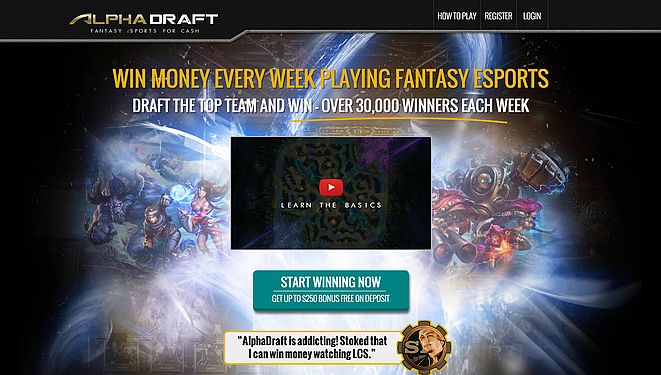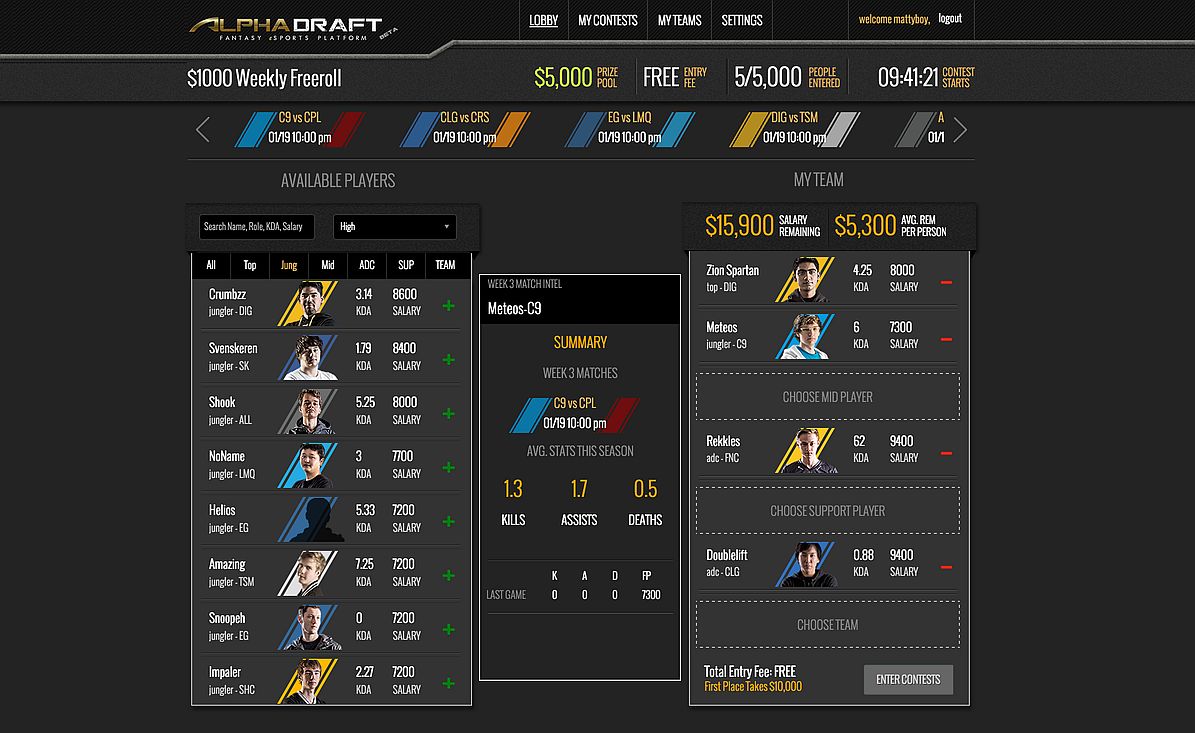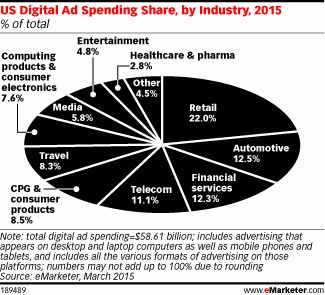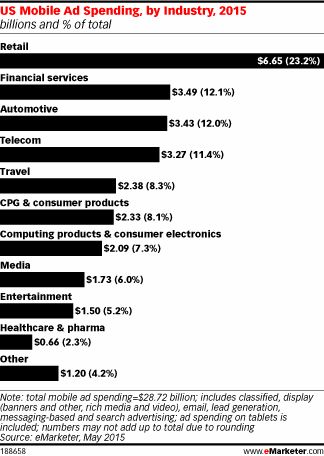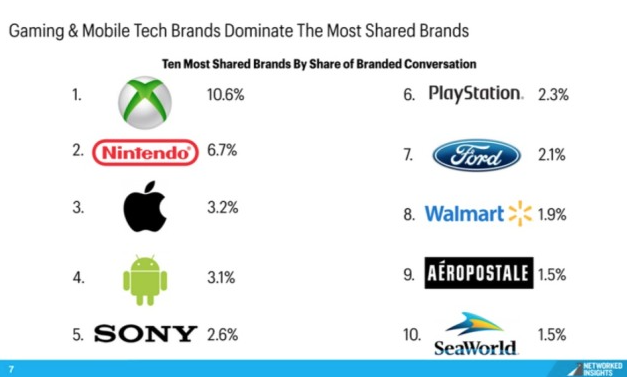The massive growth of eSports has taken the gaming industry by storm, and in the process created hundreds of millions of fans and companies with billion-dollar valuations. That huge audience of eSports fans resembles the huge audiences that traditional sports have developed, which has led to the creation of the fantasy sports industry, which generates $3.6 billion annually. Now, those two worlds have come together in fantasy eSports. AlphaDraft, billing itself as “the premier daily fantasy sports platform that seamlessly blends the highly popular worlds of eSports, live streaming and fantasy sports contests” has announced it has successfully closed its $5 million institutional round of financing.
“We are thrilled to have the confidence of such an amazing assortment of financial backers, with extensive backgrounds in fueling the dramatic growth of entertainment and sports-related ventures,” said AlphaDraft’s CEO, Todd Peterson. “AlphaDraft offers a natural extension of the eSports viewing-only experience for fans. Drawing on their intimate knowledge of the games, the pro athletes, and the teams participating, members of the eSports fan community can deepen their involvement through AlphaDraft and actively compete for bragging rights and real-world cash and prizes.”
AlphaDraft plans to pay out over $5 million in cash and prizes this year, with a goal of $1 million active users by the end of the year. AlphaDraft will also expand its support to five major eSports titles by June 1, 2015. In addition to Riot’s League of Legends, AlphaDraft will offer daily and weekly fantasy draft competitions around ten major eSports professional leagues for Counter-Strike: Global Offensive, DotA 2, SMITE and one additional, soon to be announced, leading eSports title.
AlphaDraft’s CEO, Todd Peterson, spoke exclusively with [a]listdaily about the prospects for eSports and fantasy eSports in the year ahead.
 Todd Peterson
Todd Peterson
What’s your assessment of where eSports are at right now, and where they are going in the future?
The amount of money that’s flowing into eSports now is incredible, just from the sponsors, the people that want to get involved in creating leagues and running leagues, it’s incredible. This really is going to overtake traditional sports. I know that a lot of people don’t believe that, but it’s going to happen. A lot of eyes are going to be opened over the next year and a half as that transition occurs. The number of viewers for the major events, that’s where you’ll start to see it first. Overall, because there are so many different events that are coming in, just from a pure volume perspective you’ll see more people watching eSports than each one of the individual sports. I’m not going to say that Heroes of the Storm, SMITE, Hearthstone, and League of Legends individually are bigger than football, but collectively I think you’ll see more eyeballs than that.
AlphaDraft has been active now since early this year. How has your growth been progressing, and what have you learned as you’ve grown?
The growth has been fantastic for us. We didn’t expect to have the growth that we did. Not doing a ton of marketing and still having over a million contest entries on the system is pretty impressive. I’ve come from a fantasy sports background, and I was surprised at the lack of fantasy sports knowledge among gamers. I thought there would be a little more recognition of it. This really is a new game for a lot of eSports viewers. What I’ve found is a really positive response from those folks. The things the say to me, like ‘It makes the game more fun for me,’ ‘it makes me want to play XYZ game again.’ It just makes it more enjoyable for them to watch and it makes it more likely that they’re going to play. This is exactly what publishers would want out of a solution like ours.
What’s been your most effective way of acquiring new users so far?
Word of mouth is definitely one of the biggest ones — people enjoy playing our platform and so they’re telling their friends about it, which is a good thing. Also, you really can’t beat the standard Twitch influencers, they tend to bring a lot of users. It’s all about the stars in the space — people tend to listen to what they say.
These guys get offers for crazy money all the time, but unless they like your product they’re not going to push it. It’s possible they might accept your money and put your logo up, but they won’t talk about it and promote it. You have to make sure you’re creating a product that they, especially, love. You’ll see that some of our influencers, they’ll actually be playing our game on-stream or in their videos. It’s because they enjoy playing it. I think that’s an important aspect of any product that you are trying to advertise with these influencers — in order for it to be successful they have to love it.
You’re looking to grow the eSports fantasy draft community — how will you do that?
Part of it is really education and awareness, making sure people know when the games are happening. It’s not necessarily all that easy to find this information, and it’s also not necessarily easy for a beginner to just pick up on some of these eSports. Whether it’s providing analysis or tutorials, or ways to help people understand what’s going on within the game, that’s important. For beginners, the best thing to do is to watch the health bars and listen to the casters. When they get excited, there’s probably something exciting going on on-screen. When you see a health bar go down, something is happening.
As you listen to the casters more and more, they educate. That’s how I really started to learn some of the games I had never played before, is just listening to the the casters and having them explain the game. That’s the same approach I want to take to both what we’re doing from a fantasy eSports perspective and an eSports perspective — really helping people get onboarded into the community so they understand it and enjoy watching it. I have friends in their forties or fifties who know nothing about eSports, and because of the company they are watching these games now and saying ‘this is really fun and exciting!’ It doesn’t just have to be the younger demographic watching this. As people start to watch the games more, it’s going to broaden the audience base.
How big do you think the market opportunity is for fantasy eSports in the USA, and worldwide?
It’s not even a question that it’s a multi-billion dollar opportunity. We’re just at the tip of the iceberg of how big this thing is going to grow. Easily it’s a billion dollars plus in the US, and it’s multi-billion dollars worldwide. Without a question.
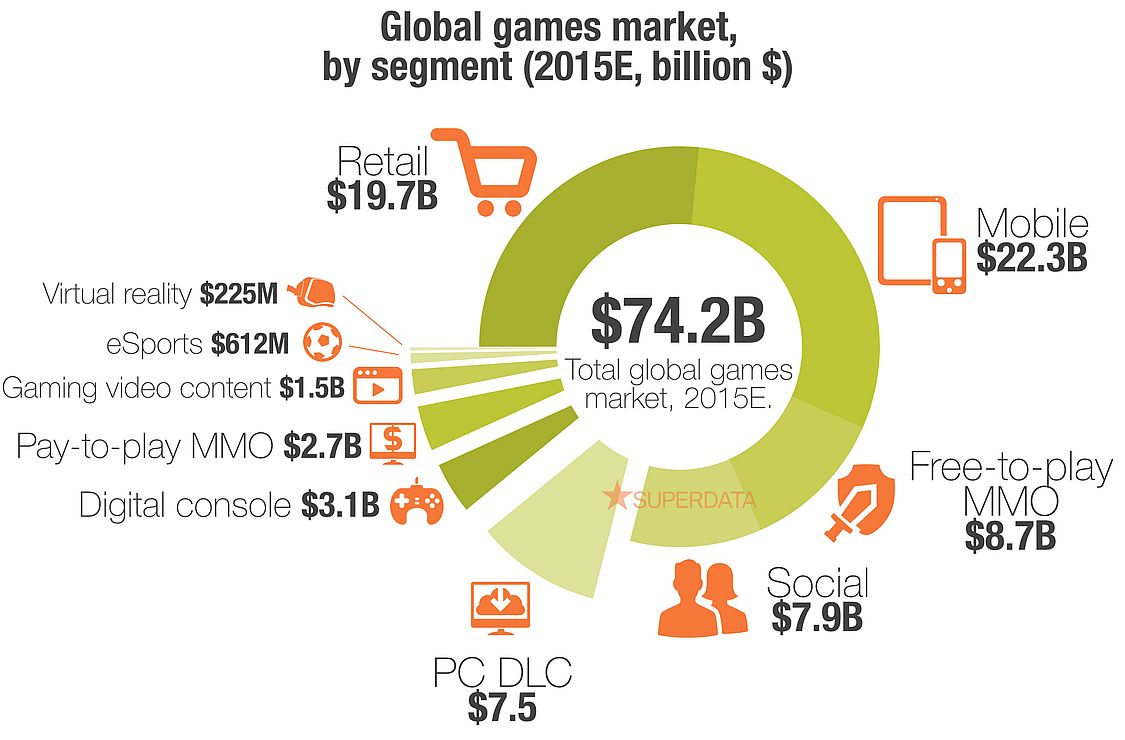
 Todd Peterson
Todd Peterson